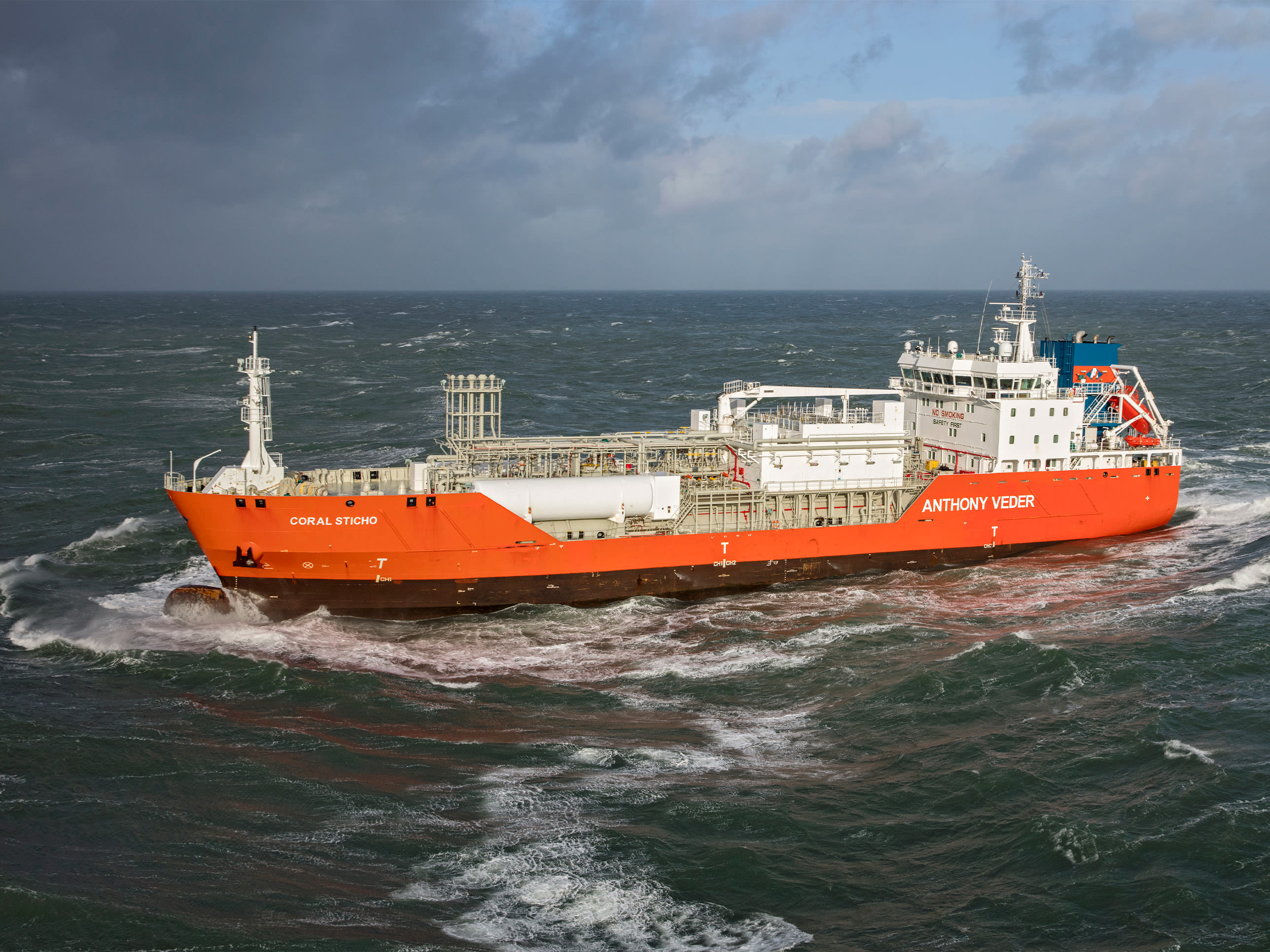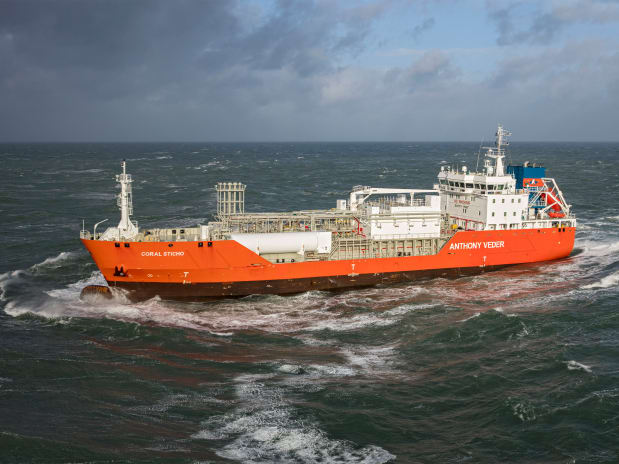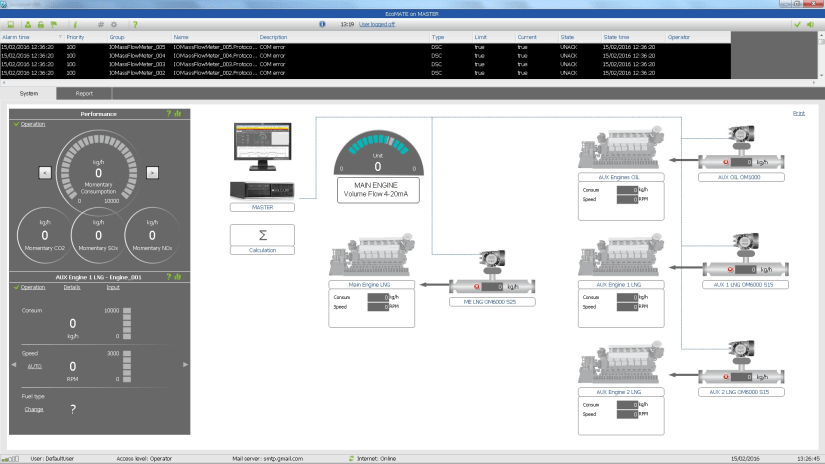Fuel consumption monitoring and reporting on LPG tankers
Application Report | Marine
- Complete overview of consumers on board to increase efficiency and reduce emissions in accordance with EU MRV and IMO
- Combined solution of monitoring system and Coriolis mass flowmeters
- Continuous and accurate data on mass flow, temperature and density of LNG and MGO fuels for main and auxiliary engines
- Engineering, service and support from KROHNE Marine, installation by ship owner

Background
The Anthony Veder Group is an integrated shipping company specializing in gas tankers. Operating their first gas tanker in 1969, their current fleet counts 31 vessels carrying all segments of the gas market from CO2 to ethylene and LPG to LNG. Among others the company operates the LPG tankers Coral Star and Coral Sticho.
Measurement requirements
Both vessels have dual fuel engines powered by MGO and LNG. Rising fuel costs and more demanding regulations have made fuel efficiency and emission control a concern for ship operators. EU MRV and IMO regulations require operators and owners to monitor fuel consumption of all consumers on board and report the verified amount of CO2 emitted by their vessels. This makes ship-specific monitoring a high priority, which requires clear and consistent daily, weekly and monthly fuel consumption data.
Anthony Veder was therefore searching for a complete monitoring solution for Coral Star and Coral Sticho. All information and reporting related to fuel consumption and carbon emissions were to be provided in one system while utilizing various flow measurements on board. This also included the installation of additional flowmeters as the customer had MGO consumption monitoring on the main engine only, using a gear-type volumetric flowmeter. The LNG flow rates to the main engine and the auxiliary engines as well as the MGO used for the auxiliary engines were not monitored.
KROHNE Solution
Anthony Veder Group decided in favour of a solution combining the EcoMATE™ fuel consumption and carbon emission monitoring system with Coriolis mass flowmeters. The KROHNE Marine scope of supply also included a marine approved computer, communication hardware (I / O box with power supply, signal interface) and printers for reports.
Three units of the OPTIMASS 6400 F Coriolis mass flowmeter were installed in the LNG fuel supply lines (DN 15…25). With its wide temperature range (down to -200 °C / -32 °F) this flowmeter is particularly suitable for LNG and other cryogenic liquids. One OPTIMASS 1010 Coriolis mass flowmeter was mounted in the MGO fuel supply line (DN 15) to one of the auxiliary engines. All flowmeters have DNV GL Marine approvals as required by the customer. EcoMATE™ uses the mass, density and temperature measurements of the Coriolis mass flowmeters as well as the signal from the existing gear-type volumetric flowmeter. In this way, EcoMATE™ enables onboard monitoring and reporting of fuel consumption, providing key emission data in accordance with EU MRV and IMO requirements.
Customer benefits
In combination with the Coriolis mass flowmeters the EcoMATE™ monitoring system provides the customer with continuous, reliable and accurate data on both LNG and MGO consumption on their ships. The acquired data helps the on board crew optimize engine performance and reduce emissions. EcoMATE™ provides configurable reports for easy compliance with EU MRV and IMO emissions registration per voyage.
KROHNE Marine worked in close cooperation with Anthony Veder to find the optimum solution for their vessels. From consultation and project management to the supply of the monitoring system and Coriolis flowmeters to the integration of the whole system into the existing infrastructure of the customer – everything has been provided from one source. This also involved the seamless integration of the existing volumetric flowmeter into the EcoMATE™ system which saved costs and installation time.




